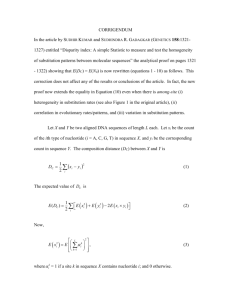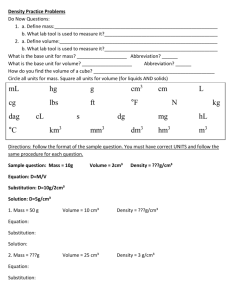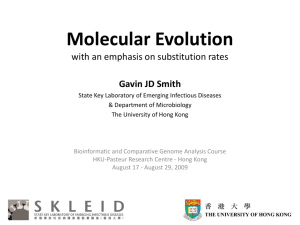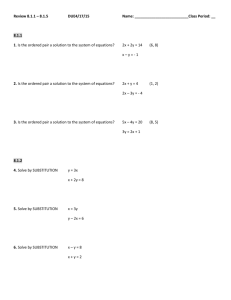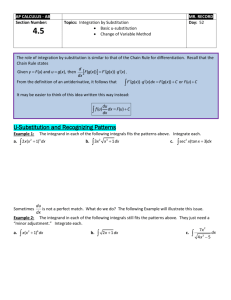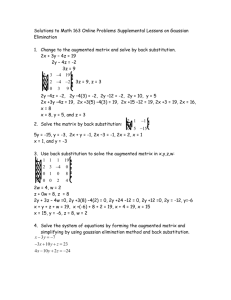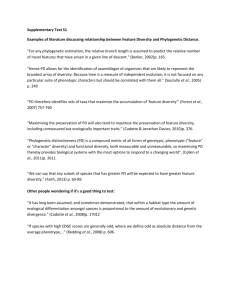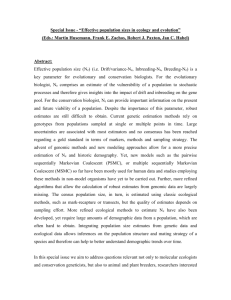Table S1. Comparison of the strengths and weaknesses of the
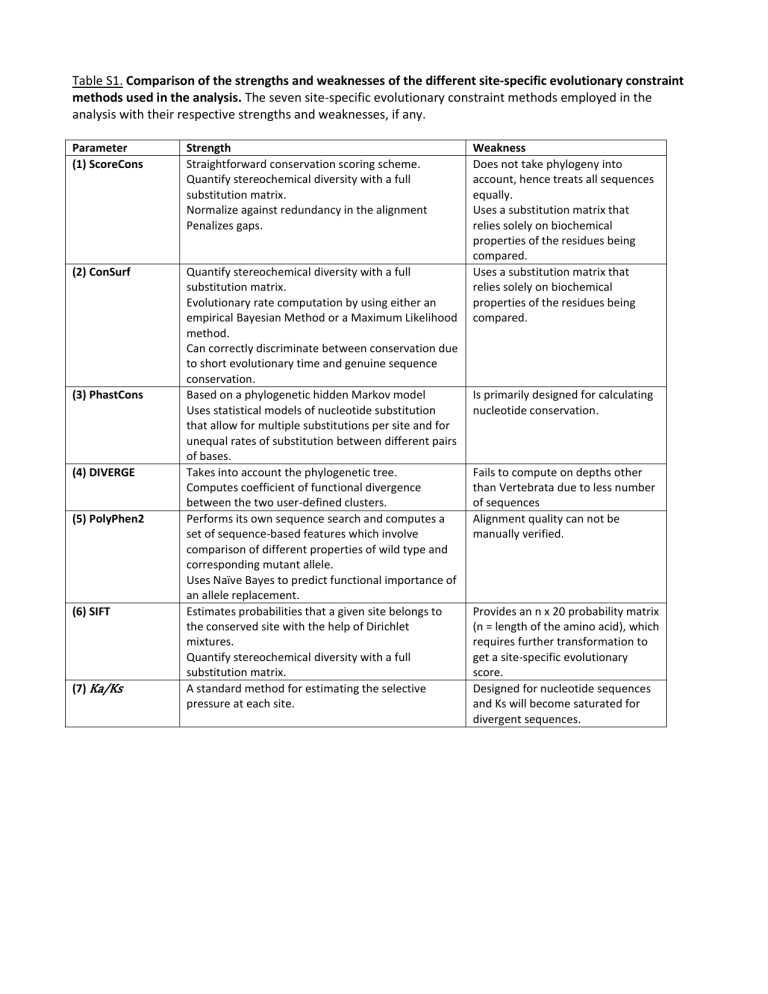
Table S1. Comparison of the strengths and weaknesses of the different site-specific evolutionary constraint
methods used in the analysis. The seven site-specific evolutionary constraint methods employed in the analysis with their respective strengths and weaknesses, if any.
Parameter
(1) ScoreCons
(2) ConSurf
Strength
Straightforward conservation scoring scheme.
Quantify stereochemical diversity with a full substitution matrix.
Normalize against redundancy in the alignment
Penalizes gaps.
Weakness
Does not take phylogeny into account, hence treats all sequences equally.
Uses a substitution matrix that relies solely on biochemical properties of the residues being compared.
Uses a substitution matrix that relies solely on biochemical properties of the residues being compared.
(3) PhastCons
(4) DIVERGE
(5) PolyPhen2
(6) SIFT
(7) Ka/Ks
Quantify stereochemical diversity with a full substitution matrix.
Evolutionary rate computation by using either an empirical Bayesian Method or a Maximum Likelihood method.
Can correctly discriminate between conservation due to short evolutionary time and genuine sequence conservation.
Based on a phylogenetic hidden Markov model
Uses statistical models of nucleotide substitution that allow for multiple substitutions per site and for unequal rates of substitution between different pairs of bases.
Takes into account the phylogenetic tree.
Computes coefficient of functional divergence between the two user-defined clusters.
Performs its own sequence search and computes a set of sequence-based features which involve comparison of different properties of wild type and corresponding mutant allele.
Uses Naïve Bayes to predict functional importance of an allele replacement.
Estimates probabilities that a given site belongs to the conserved site with the help of Dirichlet mixtures.
Quantify stereochemical diversity with a full substitution matrix.
A standard method for estimating the selective pressure at each site.
Is primarily designed for calculating nucleotide conservation.
Fails to compute on depths other than Vertebrata due to less number of sequences
Alignment quality can not be manually verified.
Provides an n x 20 probability matrix
(n = length of the amino acid), which requires further transformation to get a site-specific evolutionary score.
Designed for nucleotide sequences and Ks will become saturated for divergent sequences.
